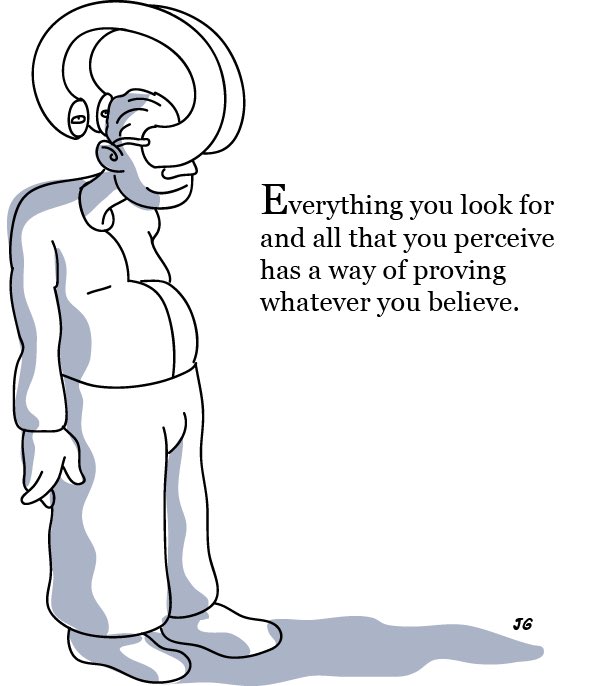1/ Cognitive Bias in Clinical Medicine
I love teaching #MedStudents about #CognitiveBias & #DiagnosticErrors & so thought I would create my debut #tweetorial on cognitive biases in clinical medicine https://abs.twimg.com/emoji/v2/... draggable="false" alt="🧑🏻⚕️" title="Health worker (light skin tone)" aria-label="Emoji: Health worker (light skin tone)">
https://abs.twimg.com/emoji/v2/... draggable="false" alt="🧑🏻⚕️" title="Health worker (light skin tone)" aria-label="Emoji: Health worker (light skin tone)"> https://abs.twimg.com/emoji/v2/... draggable="false" alt="👩🏽⚕️" title="Woman health worker (medium skin tone)" aria-label="Emoji: Woman health worker (medium skin tone)">
https://abs.twimg.com/emoji/v2/... draggable="false" alt="👩🏽⚕️" title="Woman health worker (medium skin tone)" aria-label="Emoji: Woman health worker (medium skin tone)"> https://abs.twimg.com/emoji/v2/... draggable="false" alt="👨🏼⚕️" title="Man health worker (medium light skin tone)" aria-label="Emoji: Man health worker (medium light skin tone)">
https://abs.twimg.com/emoji/v2/... draggable="false" alt="👨🏼⚕️" title="Man health worker (medium light skin tone)" aria-label="Emoji: Man health worker (medium light skin tone)">
 https://abs.twimg.com/emoji/v2/... draggable="false" alt="🤔" title="Thinking face" aria-label="Emoji: Thinking face">Now which bias that?!
https://abs.twimg.com/emoji/v2/... draggable="false" alt="🤔" title="Thinking face" aria-label="Emoji: Thinking face">Now which bias that?!
#MedTwitter
I love teaching #MedStudents about #CognitiveBias & #DiagnosticErrors & so thought I would create my debut #tweetorial on cognitive biases in clinical medicine
#MedTwitter
2/ Intended Learning Outcomes
 https://abs.twimg.com/emoji/v2/... draggable="false" alt="💡" title="Electric light bulb" aria-label="Emoji: Electric light bulb">To recognise common cognitive biases in clinical medicine
https://abs.twimg.com/emoji/v2/... draggable="false" alt="💡" title="Electric light bulb" aria-label="Emoji: Electric light bulb">To recognise common cognitive biases in clinical medicine
 https://abs.twimg.com/emoji/v2/... draggable="false" alt="💡" title="Electric light bulb" aria-label="Emoji: Electric light bulb">To identify strategies to overcome them
https://abs.twimg.com/emoji/v2/... draggable="false" alt="💡" title="Electric light bulb" aria-label="Emoji: Electric light bulb">To identify strategies to overcome them
#MedTwitter Ready? Let’s go!
#MedTwitter Ready? Let’s go!
3/ Cognitive Biases
 https://abs.twimg.com/emoji/v2/... draggable="false" alt="💡" title="Electric light bulb" aria-label="Emoji: Electric light bulb">Are cognitive shortcuts
https://abs.twimg.com/emoji/v2/... draggable="false" alt="💡" title="Electric light bulb" aria-label="Emoji: Electric light bulb">Are cognitive shortcuts
 https://abs.twimg.com/emoji/v2/... draggable="false" alt="💡" title="Electric light bulb" aria-label="Emoji: Electric light bulb">Used to aid decision-making
https://abs.twimg.com/emoji/v2/... draggable="false" alt="💡" title="Electric light bulb" aria-label="Emoji: Electric light bulb">Used to aid decision-making
 https://abs.twimg.com/emoji/v2/... draggable="false" alt="💡" title="Electric light bulb" aria-label="Emoji: Electric light bulb">AKA heuristics
https://abs.twimg.com/emoji/v2/... draggable="false" alt="💡" title="Electric light bulb" aria-label="Emoji: Electric light bulb">AKA heuristics
 https://abs.twimg.com/emoji/v2/... draggable="false" alt="✅" title="White heavy check mark" aria-label="Emoji: White heavy check mark">Helpful time-savers
https://abs.twimg.com/emoji/v2/... draggable="false" alt="✅" title="White heavy check mark" aria-label="Emoji: White heavy check mark">Helpful time-savers
 https://abs.twimg.com/emoji/v2/... draggable="false" alt="❎" title="Negative squared cross mark" aria-label="Emoji: Negative squared cross mark">Risk leading to diagnostic errors
https://abs.twimg.com/emoji/v2/... draggable="false" alt="❎" title="Negative squared cross mark" aria-label="Emoji: Negative squared cross mark">Risk leading to diagnostic errors
 https://abs.twimg.com/emoji/v2/... draggable="false" alt="❎" title="Negative squared cross mark" aria-label="Emoji: Negative squared cross mark">Diagnostic error rate in Australian #PrimaryCare is ~15%
https://abs.twimg.com/emoji/v2/... draggable="false" alt="❎" title="Negative squared cross mark" aria-label="Emoji: Negative squared cross mark">Diagnostic error rate in Australian #PrimaryCare is ~15%
https://qualitysafety.bmj.com/content/22/Suppl_2/ii21.long
Let’s">https://qualitysafety.bmj.com/content/2... look at common cognitive biases https://abs.twimg.com/emoji/v2/... draggable="false" alt="🧐" title="Face with monocle" aria-label="Emoji: Face with monocle">
https://abs.twimg.com/emoji/v2/... draggable="false" alt="🧐" title="Face with monocle" aria-label="Emoji: Face with monocle">
https://qualitysafety.bmj.com/content/22/Suppl_2/ii21.long
Let’s">https://qualitysafety.bmj.com/content/2... look at common cognitive biases
4/ Availability Heuristic
 https://abs.twimg.com/emoji/v2/... draggable="false" alt="📌" title="Pushpin" aria-label="Emoji: Pushpin">Overestimating the importance of information that is easiest to recall
https://abs.twimg.com/emoji/v2/... draggable="false" alt="📌" title="Pushpin" aria-label="Emoji: Pushpin">Overestimating the importance of information that is easiest to recall
 https://abs.twimg.com/emoji/v2/... draggable="false" alt="💡" title="Electric light bulb" aria-label="Emoji: Electric light bulb">Example: You recently miss a cardiac ischaemic event in a patient, prompting you to subsequently order troponins in all patients with chest pain
https://abs.twimg.com/emoji/v2/... draggable="false" alt="💡" title="Electric light bulb" aria-label="Emoji: Electric light bulb">Example: You recently miss a cardiac ischaemic event in a patient, prompting you to subsequently order troponins in all patients with chest pain
5/ Confirmation Bias
 https://abs.twimg.com/emoji/v2/... draggable="false" alt="📌" title="Pushpin" aria-label="Emoji: Pushpin">Seeking & prioritising information that confirms your existing beliefs
https://abs.twimg.com/emoji/v2/... draggable="false" alt="📌" title="Pushpin" aria-label="Emoji: Pushpin">Seeking & prioritising information that confirms your existing beliefs
 https://abs.twimg.com/emoji/v2/... draggable="false" alt="💡" title="Electric light bulb" aria-label="Emoji: Electric light bulb">Example: You suspect a patient has an infection & justify this diagnosis by their elevated white cells, rather than exploring all possible causes of their elevated white cells.
https://abs.twimg.com/emoji/v2/... draggable="false" alt="💡" title="Electric light bulb" aria-label="Emoji: Electric light bulb">Example: You suspect a patient has an infection & justify this diagnosis by their elevated white cells, rather than exploring all possible causes of their elevated white cells.
6/ Anchoring Effect
 https://abs.twimg.com/emoji/v2/... draggable="false" alt="📌" title="Pushpin" aria-label="Emoji: Pushpin">Excessively focusing on the first piece of information you receive when decision-making
https://abs.twimg.com/emoji/v2/... draggable="false" alt="📌" title="Pushpin" aria-label="Emoji: Pushpin">Excessively focusing on the first piece of information you receive when decision-making
 https://abs.twimg.com/emoji/v2/... draggable="false" alt="💡" title="Electric light bulb" aria-label="Emoji: Electric light bulb">Example: You think that a patient with abdominal pain must have pancreatitis due to their known alcohol abuse, despite a normal lipase.
https://abs.twimg.com/emoji/v2/... draggable="false" alt="💡" title="Electric light bulb" aria-label="Emoji: Electric light bulb">Example: You think that a patient with abdominal pain must have pancreatitis due to their known alcohol abuse, despite a normal lipase.
7/ Bandwagon effect
AKA diagnostic momentum
 https://abs.twimg.com/emoji/v2/... draggable="false" alt="📌" title="Pushpin" aria-label="Emoji: Pushpin">The tendency for people to believe certain things because others think so
https://abs.twimg.com/emoji/v2/... draggable="false" alt="📌" title="Pushpin" aria-label="Emoji: Pushpin">The tendency for people to believe certain things because others think so
 https://abs.twimg.com/emoji/v2/... draggable="false" alt="💡" title="Electric light bulb" aria-label="Emoji: Electric light bulb">Example: You are handed over a patient with a ‘likely PE’ & go ahead & order the CTPA without reviewing the case or considering other diagnoses.
https://abs.twimg.com/emoji/v2/... draggable="false" alt="💡" title="Electric light bulb" aria-label="Emoji: Electric light bulb">Example: You are handed over a patient with a ‘likely PE’ & go ahead & order the CTPA without reviewing the case or considering other diagnoses.
AKA diagnostic momentum
8/ Framing effect
 https://abs.twimg.com/emoji/v2/... draggable="false" alt="📌" title="Pushpin" aria-label="Emoji: Pushpin">Drawing different conclusions from the same information presented differently
https://abs.twimg.com/emoji/v2/... draggable="false" alt="📌" title="Pushpin" aria-label="Emoji: Pushpin">Drawing different conclusions from the same information presented differently
 https://abs.twimg.com/emoji/v2/... draggable="false" alt="💡" title="Electric light bulb" aria-label="Emoji: Electric light bulb">Example: The nurses ask you to quickly discharge a patient with abdo pain. The patient is framed as a ‘frequent flyer’ requesting narcotics, when they really have appendicitis.
https://abs.twimg.com/emoji/v2/... draggable="false" alt="💡" title="Electric light bulb" aria-label="Emoji: Electric light bulb">Example: The nurses ask you to quickly discharge a patient with abdo pain. The patient is framed as a ‘frequent flyer’ requesting narcotics, when they really have appendicitis.
9/ How can we ‘debias’ our clinical decision making to reduce diagnostic errors?
 https://abs.twimg.com/emoji/v2/... draggable="false" alt="🧐" title="Face with monocle" aria-label="Emoji: Face with monocle">Learn about cognitive biases
https://abs.twimg.com/emoji/v2/... draggable="false" alt="🧐" title="Face with monocle" aria-label="Emoji: Face with monocle">Learn about cognitive biases
 https://abs.twimg.com/emoji/v2/... draggable="false" alt="🐢" title="Turtle" aria-label="Emoji: Turtle">Slow down your thinking
https://abs.twimg.com/emoji/v2/... draggable="false" alt="🐢" title="Turtle" aria-label="Emoji: Turtle">Slow down your thinking
 https://abs.twimg.com/emoji/v2/... draggable="false" alt="💡" title="Electric light bulb" aria-label="Emoji: Electric light bulb">Be systematic
https://abs.twimg.com/emoji/v2/... draggable="false" alt="💡" title="Electric light bulb" aria-label="Emoji: Electric light bulb">Be systematic
 https://abs.twimg.com/emoji/v2/... draggable="false" alt="📝" title="Memo" aria-label="Emoji: Memo">Have checklists
https://abs.twimg.com/emoji/v2/... draggable="false" alt="📝" title="Memo" aria-label="Emoji: Memo">Have checklists
 https://abs.twimg.com/emoji/v2/... draggable="false" alt="🙋🏻♀️" title="Happy woman raising one hand (light skin tone)" aria-label="Emoji: Happy woman raising one hand (light skin tone)">Ask for others opinions
https://abs.twimg.com/emoji/v2/... draggable="false" alt="🙋🏻♀️" title="Happy woman raising one hand (light skin tone)" aria-label="Emoji: Happy woman raising one hand (light skin tone)">Ask for others opinions
 https://abs.twimg.com/emoji/v2/... draggable="false" alt="✅" title="White heavy check mark" aria-label="Emoji: White heavy check mark">Check in your emotions
https://abs.twimg.com/emoji/v2/... draggable="false" alt="✅" title="White heavy check mark" aria-label="Emoji: White heavy check mark">Check in your emotions  https://abs.twimg.com/emoji/v2/... draggable="false" alt="😴" title="Sleeping face" aria-label="Emoji: Sleeping face">
https://abs.twimg.com/emoji/v2/... draggable="false" alt="😴" title="Sleeping face" aria-label="Emoji: Sleeping face"> https://abs.twimg.com/emoji/v2/... draggable="false" alt="🤬" title="Face with symbols over mouth" aria-label="Emoji: Face with symbols over mouth">
https://abs.twimg.com/emoji/v2/... draggable="false" alt="🤬" title="Face with symbols over mouth" aria-label="Emoji: Face with symbols over mouth"> https://abs.twimg.com/emoji/v2/... draggable="false" alt="😰" title="Face with open mouth and cold sweat" aria-label="Emoji: Face with open mouth and cold sweat">
https://abs.twimg.com/emoji/v2/... draggable="false" alt="😰" title="Face with open mouth and cold sweat" aria-label="Emoji: Face with open mouth and cold sweat">
 https://abs.twimg.com/emoji/v2/... draggable="false" alt="⏱" title="Stopwatch" aria-label="Emoji: Stopwatch">Use a diagnostic ‘time out’
https://abs.twimg.com/emoji/v2/... draggable="false" alt="⏱" title="Stopwatch" aria-label="Emoji: Stopwatch">Use a diagnostic ‘time out’
#MedTwitter
#MedTwitter
10/ @IMreasoning recommend using a ‘cognitive forcing checklist’ to think about your thinking (metacognition):
1 What else could this be? https://abs.twimg.com/emoji/v2/... draggable="false" alt="🧐" title="Face with monocle" aria-label="Emoji: Face with monocle">
https://abs.twimg.com/emoji/v2/... draggable="false" alt="🧐" title="Face with monocle" aria-label="Emoji: Face with monocle">
2 What’s the worst it could be? https://abs.twimg.com/emoji/v2/... draggable="false" alt="🤯" title="Exploding head" aria-label="Emoji: Exploding head">
https://abs.twimg.com/emoji/v2/... draggable="false" alt="🤯" title="Exploding head" aria-label="Emoji: Exploding head">
3 What doesn’t fit? https://abs.twimg.com/emoji/v2/... draggable="false" alt="🧩" title="Jigsaw" aria-label="Emoji: Jigsaw">
https://abs.twimg.com/emoji/v2/... draggable="false" alt="🧩" title="Jigsaw" aria-label="Emoji: Jigsaw">
4 Do I need to slow down?
5 Am I https://abs.twimg.com/emoji/v2/... draggable="false" alt="😴" title="Sleeping face" aria-label="Emoji: Sleeping face">,
https://abs.twimg.com/emoji/v2/... draggable="false" alt="😴" title="Sleeping face" aria-label="Emoji: Sleeping face">,  https://abs.twimg.com/emoji/v2/... draggable="false" alt="🤧" title="Sneezing face" aria-label="Emoji: Sneezing face">,
https://abs.twimg.com/emoji/v2/... draggable="false" alt="🤧" title="Sneezing face" aria-label="Emoji: Sneezing face">,  https://abs.twimg.com/emoji/v2/... draggable="false" alt="😤" title="Face with look of triumph" aria-label="Emoji: Face with look of triumph"> or
https://abs.twimg.com/emoji/v2/... draggable="false" alt="😤" title="Face with look of triumph" aria-label="Emoji: Face with look of triumph"> or  https://abs.twimg.com/emoji/v2/... draggable="false" alt="🤪" title="Zany face" aria-label="Emoji: Zany face">? http://imreasoning.com/episodes/episode-2-biases/">https://imreasoning.com/episodes/...
https://abs.twimg.com/emoji/v2/... draggable="false" alt="🤪" title="Zany face" aria-label="Emoji: Zany face">? http://imreasoning.com/episodes/episode-2-biases/">https://imreasoning.com/episodes/...
1 What else could this be?
2 What’s the worst it could be?
3 What doesn’t fit?
4 Do I need to slow down?
5 Am I
11/ Take Home Messages:
 https://abs.twimg.com/emoji/v2/... draggable="false" alt="✅" title="White heavy check mark" aria-label="Emoji: White heavy check mark">We all make cognitive biases which lead to diagnostic errors in medicine
https://abs.twimg.com/emoji/v2/... draggable="false" alt="✅" title="White heavy check mark" aria-label="Emoji: White heavy check mark">We all make cognitive biases which lead to diagnostic errors in medicine
 https://abs.twimg.com/emoji/v2/... draggable="false" alt="✅" title="White heavy check mark" aria-label="Emoji: White heavy check mark">Being aware of our biases is the 1st step in preventing them
https://abs.twimg.com/emoji/v2/... draggable="false" alt="✅" title="White heavy check mark" aria-label="Emoji: White heavy check mark">Being aware of our biases is the 1st step in preventing them
 https://abs.twimg.com/emoji/v2/... draggable="false" alt="✅" title="White heavy check mark" aria-label="Emoji: White heavy check mark">There are ample strategies to reduce cognitive biases & ∴ diagnostic errors. Pick one & try it out this week!
https://abs.twimg.com/emoji/v2/... draggable="false" alt="✅" title="White heavy check mark" aria-label="Emoji: White heavy check mark">There are ample strategies to reduce cognitive biases & ∴ diagnostic errors. Pick one & try it out this week!
12/ Check out more here:
http://sjrhem.ca/wp-content/uploads/2015/11/CriticaThinking-Listof50-biases.pdf
https://sjrhem.ca/wp-conten... href=" https://www.intellectualtakeout.org/blog/10-cognitive-biases-affect-your-everyday-decisions
https://www.intellectualtakeout.org/blog/10-c... href=" https://www.rcpe.ac.uk/sites/default/files/jrcpe_48_3_osullivan.pdf
https://www.rcpe.ac.uk/sites/def... href=" https://www1.racgp.org.au/newsgp/professional/reducing-diagnostic-error">https://www1.racgp.org.au/newsgp/pr...
http://sjrhem.ca/wp-content/uploads/2015/11/CriticaThinking-Listof50-biases.pdf

 Read on Twitter
Read on Twitter https://abs.twimg.com/emoji/v2/... draggable="false" alt="👩🏽⚕️" title="Woman health worker (medium skin tone)" aria-label="Emoji: Woman health worker (medium skin tone)">https://abs.twimg.com/emoji/v2/... draggable="false" alt="👨🏼⚕️" title="Man health worker (medium light skin tone)" aria-label="Emoji: Man health worker (medium light skin tone)">https://abs.twimg.com/emoji/v2/... draggable="false" alt="🤔" title="Thinking face" aria-label="Emoji: Thinking face">Now which bias that?! #MedTwitter" title="1/ Cognitive Bias in Clinical MedicineI love teaching #MedStudents about #CognitiveBias & #DiagnosticErrors & so thought I would create my debut #tweetorial on cognitive biases in clinical medicine https://abs.twimg.com/emoji/v2/... draggable="false" alt="🧑🏻⚕️" title="Health worker (light skin tone)" aria-label="Emoji: Health worker (light skin tone)">https://abs.twimg.com/emoji/v2/... draggable="false" alt="👩🏽⚕️" title="Woman health worker (medium skin tone)" aria-label="Emoji: Woman health worker (medium skin tone)">https://abs.twimg.com/emoji/v2/... draggable="false" alt="👨🏼⚕️" title="Man health worker (medium light skin tone)" aria-label="Emoji: Man health worker (medium light skin tone)">https://abs.twimg.com/emoji/v2/... draggable="false" alt="🤔" title="Thinking face" aria-label="Emoji: Thinking face">Now which bias that?! #MedTwitter" class="img-responsive" style="max-width:100%;"/>
https://abs.twimg.com/emoji/v2/... draggable="false" alt="👩🏽⚕️" title="Woman health worker (medium skin tone)" aria-label="Emoji: Woman health worker (medium skin tone)">https://abs.twimg.com/emoji/v2/... draggable="false" alt="👨🏼⚕️" title="Man health worker (medium light skin tone)" aria-label="Emoji: Man health worker (medium light skin tone)">https://abs.twimg.com/emoji/v2/... draggable="false" alt="🤔" title="Thinking face" aria-label="Emoji: Thinking face">Now which bias that?! #MedTwitter" title="1/ Cognitive Bias in Clinical MedicineI love teaching #MedStudents about #CognitiveBias & #DiagnosticErrors & so thought I would create my debut #tweetorial on cognitive biases in clinical medicine https://abs.twimg.com/emoji/v2/... draggable="false" alt="🧑🏻⚕️" title="Health worker (light skin tone)" aria-label="Emoji: Health worker (light skin tone)">https://abs.twimg.com/emoji/v2/... draggable="false" alt="👩🏽⚕️" title="Woman health worker (medium skin tone)" aria-label="Emoji: Woman health worker (medium skin tone)">https://abs.twimg.com/emoji/v2/... draggable="false" alt="👨🏼⚕️" title="Man health worker (medium light skin tone)" aria-label="Emoji: Man health worker (medium light skin tone)">https://abs.twimg.com/emoji/v2/... draggable="false" alt="🤔" title="Thinking face" aria-label="Emoji: Thinking face">Now which bias that?! #MedTwitter" class="img-responsive" style="max-width:100%;"/>
 Overestimating the importance of information that is easiest to recallhttps://abs.twimg.com/emoji/v2/... draggable="false" alt="💡" title="Electric light bulb" aria-label="Emoji: Electric light bulb">Example: You recently miss a cardiac ischaemic event in a patient, prompting you to subsequently order troponins in all patients with chest pain" title="4/ Availability Heuristichttps://abs.twimg.com/emoji/v2/... draggable="false" alt="📌" title="Pushpin" aria-label="Emoji: Pushpin">Overestimating the importance of information that is easiest to recallhttps://abs.twimg.com/emoji/v2/... draggable="false" alt="💡" title="Electric light bulb" aria-label="Emoji: Electric light bulb">Example: You recently miss a cardiac ischaemic event in a patient, prompting you to subsequently order troponins in all patients with chest pain" class="img-responsive" style="max-width:100%;"/>
Overestimating the importance of information that is easiest to recallhttps://abs.twimg.com/emoji/v2/... draggable="false" alt="💡" title="Electric light bulb" aria-label="Emoji: Electric light bulb">Example: You recently miss a cardiac ischaemic event in a patient, prompting you to subsequently order troponins in all patients with chest pain" title="4/ Availability Heuristichttps://abs.twimg.com/emoji/v2/... draggable="false" alt="📌" title="Pushpin" aria-label="Emoji: Pushpin">Overestimating the importance of information that is easiest to recallhttps://abs.twimg.com/emoji/v2/... draggable="false" alt="💡" title="Electric light bulb" aria-label="Emoji: Electric light bulb">Example: You recently miss a cardiac ischaemic event in a patient, prompting you to subsequently order troponins in all patients with chest pain" class="img-responsive" style="max-width:100%;"/>
 Seeking & prioritising information that confirms your existing beliefshttps://abs.twimg.com/emoji/v2/... draggable="false" alt="💡" title="Electric light bulb" aria-label="Emoji: Electric light bulb">Example: You suspect a patient has an infection & justify this diagnosis by their elevated white cells, rather than exploring all possible causes of their elevated white cells." title="5/ Confirmation Biashttps://abs.twimg.com/emoji/v2/... draggable="false" alt="📌" title="Pushpin" aria-label="Emoji: Pushpin">Seeking & prioritising information that confirms your existing beliefshttps://abs.twimg.com/emoji/v2/... draggable="false" alt="💡" title="Electric light bulb" aria-label="Emoji: Electric light bulb">Example: You suspect a patient has an infection & justify this diagnosis by their elevated white cells, rather than exploring all possible causes of their elevated white cells." class="img-responsive" style="max-width:100%;"/>
Seeking & prioritising information that confirms your existing beliefshttps://abs.twimg.com/emoji/v2/... draggable="false" alt="💡" title="Electric light bulb" aria-label="Emoji: Electric light bulb">Example: You suspect a patient has an infection & justify this diagnosis by their elevated white cells, rather than exploring all possible causes of their elevated white cells." title="5/ Confirmation Biashttps://abs.twimg.com/emoji/v2/... draggable="false" alt="📌" title="Pushpin" aria-label="Emoji: Pushpin">Seeking & prioritising information that confirms your existing beliefshttps://abs.twimg.com/emoji/v2/... draggable="false" alt="💡" title="Electric light bulb" aria-label="Emoji: Electric light bulb">Example: You suspect a patient has an infection & justify this diagnosis by their elevated white cells, rather than exploring all possible causes of their elevated white cells." class="img-responsive" style="max-width:100%;"/>
 Excessively focusing on the first piece of information you receive when decision-makinghttps://abs.twimg.com/emoji/v2/... draggable="false" alt="💡" title="Electric light bulb" aria-label="Emoji: Electric light bulb">Example: You think that a patient with abdominal pain must have pancreatitis due to their known alcohol abuse, despite a normal lipase." title="6/ Anchoring Effecthttps://abs.twimg.com/emoji/v2/... draggable="false" alt="📌" title="Pushpin" aria-label="Emoji: Pushpin">Excessively focusing on the first piece of information you receive when decision-makinghttps://abs.twimg.com/emoji/v2/... draggable="false" alt="💡" title="Electric light bulb" aria-label="Emoji: Electric light bulb">Example: You think that a patient with abdominal pain must have pancreatitis due to their known alcohol abuse, despite a normal lipase." class="img-responsive" style="max-width:100%;"/>
Excessively focusing on the first piece of information you receive when decision-makinghttps://abs.twimg.com/emoji/v2/... draggable="false" alt="💡" title="Electric light bulb" aria-label="Emoji: Electric light bulb">Example: You think that a patient with abdominal pain must have pancreatitis due to their known alcohol abuse, despite a normal lipase." title="6/ Anchoring Effecthttps://abs.twimg.com/emoji/v2/... draggable="false" alt="📌" title="Pushpin" aria-label="Emoji: Pushpin">Excessively focusing on the first piece of information you receive when decision-makinghttps://abs.twimg.com/emoji/v2/... draggable="false" alt="💡" title="Electric light bulb" aria-label="Emoji: Electric light bulb">Example: You think that a patient with abdominal pain must have pancreatitis due to their known alcohol abuse, despite a normal lipase." class="img-responsive" style="max-width:100%;"/>
 The tendency for people to believe certain things because others think so https://abs.twimg.com/emoji/v2/... draggable="false" alt="💡" title="Electric light bulb" aria-label="Emoji: Electric light bulb">Example: You are handed over a patient with a ‘likely PE’ & go ahead & order the CTPA without reviewing the case or considering other diagnoses." title="7/ Bandwagon effect AKA diagnostic momentumhttps://abs.twimg.com/emoji/v2/... draggable="false" alt="📌" title="Pushpin" aria-label="Emoji: Pushpin">The tendency for people to believe certain things because others think so https://abs.twimg.com/emoji/v2/... draggable="false" alt="💡" title="Electric light bulb" aria-label="Emoji: Electric light bulb">Example: You are handed over a patient with a ‘likely PE’ & go ahead & order the CTPA without reviewing the case or considering other diagnoses." class="img-responsive" style="max-width:100%;"/>
The tendency for people to believe certain things because others think so https://abs.twimg.com/emoji/v2/... draggable="false" alt="💡" title="Electric light bulb" aria-label="Emoji: Electric light bulb">Example: You are handed over a patient with a ‘likely PE’ & go ahead & order the CTPA without reviewing the case or considering other diagnoses." title="7/ Bandwagon effect AKA diagnostic momentumhttps://abs.twimg.com/emoji/v2/... draggable="false" alt="📌" title="Pushpin" aria-label="Emoji: Pushpin">The tendency for people to believe certain things because others think so https://abs.twimg.com/emoji/v2/... draggable="false" alt="💡" title="Electric light bulb" aria-label="Emoji: Electric light bulb">Example: You are handed over a patient with a ‘likely PE’ & go ahead & order the CTPA without reviewing the case or considering other diagnoses." class="img-responsive" style="max-width:100%;"/>
 Drawing different conclusions from the same information presented differentlyhttps://abs.twimg.com/emoji/v2/... draggable="false" alt="💡" title="Electric light bulb" aria-label="Emoji: Electric light bulb">Example: The nurses ask you to quickly discharge a patient with abdo pain. The patient is framed as a ‘frequent flyer’ requesting narcotics, when they really have appendicitis." title="8/ Framing effecthttps://abs.twimg.com/emoji/v2/... draggable="false" alt="📌" title="Pushpin" aria-label="Emoji: Pushpin">Drawing different conclusions from the same information presented differentlyhttps://abs.twimg.com/emoji/v2/... draggable="false" alt="💡" title="Electric light bulb" aria-label="Emoji: Electric light bulb">Example: The nurses ask you to quickly discharge a patient with abdo pain. The patient is framed as a ‘frequent flyer’ requesting narcotics, when they really have appendicitis." class="img-responsive" style="max-width:100%;"/>
Drawing different conclusions from the same information presented differentlyhttps://abs.twimg.com/emoji/v2/... draggable="false" alt="💡" title="Electric light bulb" aria-label="Emoji: Electric light bulb">Example: The nurses ask you to quickly discharge a patient with abdo pain. The patient is framed as a ‘frequent flyer’ requesting narcotics, when they really have appendicitis." title="8/ Framing effecthttps://abs.twimg.com/emoji/v2/... draggable="false" alt="📌" title="Pushpin" aria-label="Emoji: Pushpin">Drawing different conclusions from the same information presented differentlyhttps://abs.twimg.com/emoji/v2/... draggable="false" alt="💡" title="Electric light bulb" aria-label="Emoji: Electric light bulb">Example: The nurses ask you to quickly discharge a patient with abdo pain. The patient is framed as a ‘frequent flyer’ requesting narcotics, when they really have appendicitis." class="img-responsive" style="max-width:100%;"/>
 We all make cognitive biases which lead to diagnostic errors in medicinehttps://abs.twimg.com/emoji/v2/... draggable="false" alt="✅" title="White heavy check mark" aria-label="Emoji: White heavy check mark">Being aware of our biases is the 1st step in preventing themhttps://abs.twimg.com/emoji/v2/... draggable="false" alt="✅" title="White heavy check mark" aria-label="Emoji: White heavy check mark">There are ample strategies to reduce cognitive biases & ∴ diagnostic errors. Pick one & try it out this week!" title="11/ Take Home Messages:https://abs.twimg.com/emoji/v2/... draggable="false" alt="✅" title="White heavy check mark" aria-label="Emoji: White heavy check mark">We all make cognitive biases which lead to diagnostic errors in medicinehttps://abs.twimg.com/emoji/v2/... draggable="false" alt="✅" title="White heavy check mark" aria-label="Emoji: White heavy check mark">Being aware of our biases is the 1st step in preventing themhttps://abs.twimg.com/emoji/v2/... draggable="false" alt="✅" title="White heavy check mark" aria-label="Emoji: White heavy check mark">There are ample strategies to reduce cognitive biases & ∴ diagnostic errors. Pick one & try it out this week!" class="img-responsive" style="max-width:100%;"/>
We all make cognitive biases which lead to diagnostic errors in medicinehttps://abs.twimg.com/emoji/v2/... draggable="false" alt="✅" title="White heavy check mark" aria-label="Emoji: White heavy check mark">Being aware of our biases is the 1st step in preventing themhttps://abs.twimg.com/emoji/v2/... draggable="false" alt="✅" title="White heavy check mark" aria-label="Emoji: White heavy check mark">There are ample strategies to reduce cognitive biases & ∴ diagnostic errors. Pick one & try it out this week!" title="11/ Take Home Messages:https://abs.twimg.com/emoji/v2/... draggable="false" alt="✅" title="White heavy check mark" aria-label="Emoji: White heavy check mark">We all make cognitive biases which lead to diagnostic errors in medicinehttps://abs.twimg.com/emoji/v2/... draggable="false" alt="✅" title="White heavy check mark" aria-label="Emoji: White heavy check mark">Being aware of our biases is the 1st step in preventing themhttps://abs.twimg.com/emoji/v2/... draggable="false" alt="✅" title="White heavy check mark" aria-label="Emoji: White heavy check mark">There are ample strategies to reduce cognitive biases & ∴ diagnostic errors. Pick one & try it out this week!" class="img-responsive" style="max-width:100%;"/>


